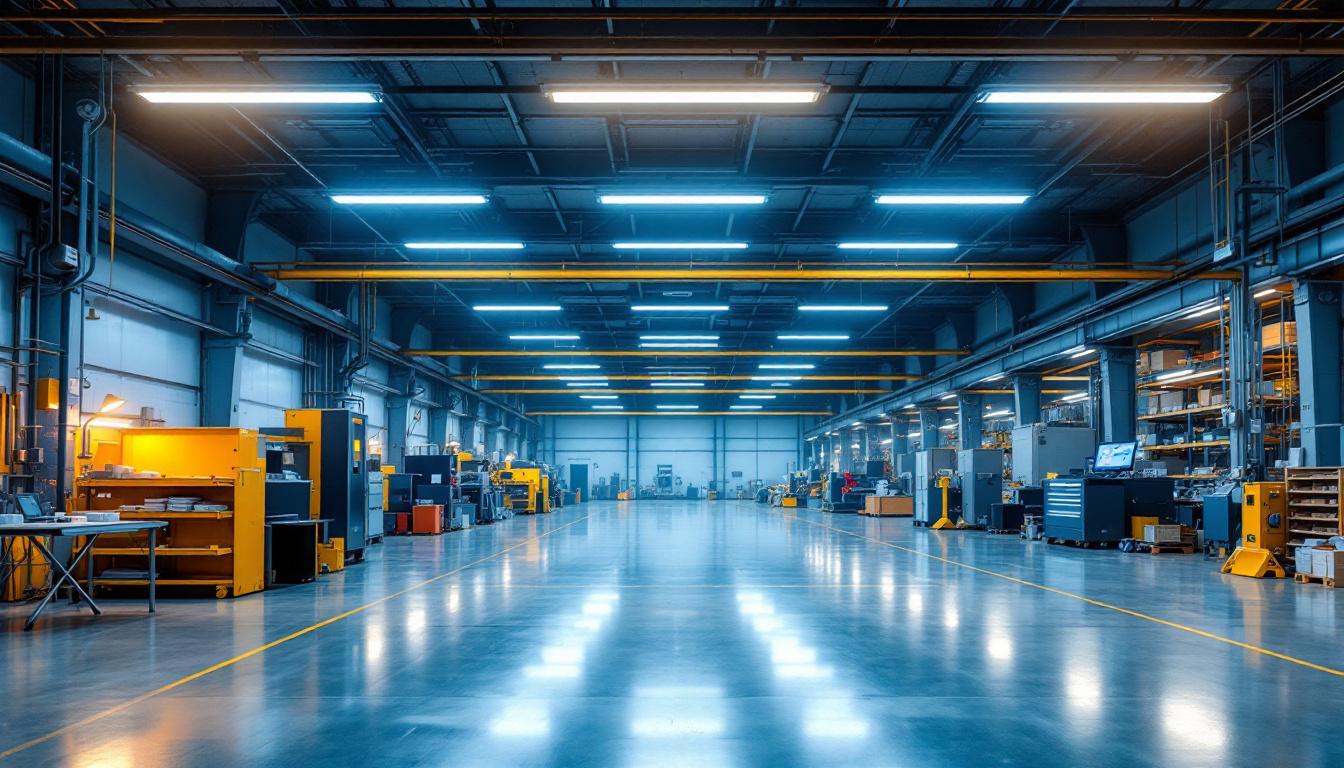
In the realm of commercial and residential lighting, the ballast is often an overlooked component, yet it plays a crucial role in the performance and efficiency of fluorescent lighting systems. For lighting contractors, understanding the function and benefits of ballasts can enhance project outcomes and client satisfaction. This article delves into the significance of ballasts, their types, and how they can boost efficiency in various lighting applications.
Ballasts are electrical devices that regulate the current to fluorescent lamps, ensuring they operate efficiently and effectively. They serve multiple functions, including providing the necessary starting voltage, limiting the current during operation, and stabilizing the light output. Without a proper ballast, fluorescent lights can flicker, produce inconsistent brightness, or even fail to start. In addition to these essential functions, ballasts also play a crucial role in extending the lifespan of fluorescent lamps by preventing excessive current that can lead to overheating and premature failure.
There are primarily two types of ballasts used in fluorescent lighting: magnetic and electronic. Each type has its advantages and disadvantages that can impact the overall efficiency of a lighting system. Understanding these differences is vital for selecting the right ballast for specific applications, whether in commercial, industrial, or residential settings.
Magnetic ballasts have been around for decades and are known for their durability. They work by using electromagnetic coils to regulate the current. While they are robust, magnetic ballasts tend to be less energy-efficient compared to their electronic counterparts. They often generate more heat and can be bulkier in size, which may be a consideration in space-constrained installations. Additionally, magnetic ballasts can produce a noticeable hum during operation, which some users find distracting. Despite these drawbacks, they are favored in certain applications due to their simplicity and reliability, especially in environments where extreme durability is required.
Electronic ballasts, on the other hand, are designed to provide a more efficient operation. They use electronic circuitry to control the current flow, resulting in reduced energy consumption and improved light output. Electronic ballasts are typically smaller, lighter, and quieter than magnetic ballasts, making them a popular choice for modern lighting installations. Moreover, they can operate at a higher frequency, which not only enhances the quality of light produced but also minimizes flickering, creating a more pleasant environment. This higher frequency operation can also contribute to better color rendering, making electronic ballasts ideal for settings where accurate color perception is crucial, such as in art galleries or retail spaces.
For lighting contractors looking to enhance the performance of fluorescent lighting systems, upgrading to electronic ballasts can yield numerous benefits. These advantages not only improve energy efficiency but also contribute to better lighting quality and longer lamp life.
One of the most significant benefits of electronic ballasts is their energy efficiency. They consume less power than magnetic ballasts, leading to lower electricity bills for clients. This is particularly important in commercial settings where lighting is used extensively. By switching to electronic ballasts, contractors can help clients achieve significant energy savings over time. Additionally, many utility companies offer rebates and incentives for businesses that upgrade to energy-efficient lighting solutions, further enhancing the financial appeal of this upgrade.
Electronic ballasts provide a more stable and consistent light output. They eliminate flickering and reduce noise, creating a more pleasant environment for occupants. This is especially beneficial in settings such as offices, schools, and healthcare facilities, where lighting quality can impact productivity and well-being. Furthermore, electronic ballasts can support a wider range of lamp types and wattages, allowing for greater flexibility in lighting design. This adaptability can help contractors create customized lighting solutions that meet the specific needs of their clients, enhancing both functionality and aesthetics.
By providing a controlled current and reducing the risk of overheating, electronic ballasts can extend the lifespan of fluorescent lamps. This means fewer replacements and maintenance costs for clients, making it a cost-effective solution in the long run. Contractors can market this advantage to clients looking for sustainable and economical lighting solutions. Moreover, the reduced frequency of lamp changes not only saves money but also minimizes the environmental impact associated with lamp disposal. As businesses increasingly focus on sustainability, promoting the eco-friendly aspects of electronic ballasts can be a compelling selling point that aligns with their corporate social responsibility goals.
Another notable benefit of electronic ballasts is their quieter operation compared to traditional magnetic ballasts. The humming and buzzing often associated with older systems can be distracting and disruptive, particularly in environments that require concentration, such as libraries or conference rooms. By upgrading to electronic ballasts, contractors can ensure a quieter ambiance, which can significantly enhance the overall comfort of the space. This is particularly advantageous in open-plan offices where noise levels can easily escalate, impacting employee focus and productivity.
Electronic ballasts are also designed to be compatible with advanced lighting control systems, such as dimmers and occupancy sensors. This compatibility allows for greater control over lighting levels, enabling users to adjust brightness according to their needs or preferences. In settings where energy conservation is a priority, such as retail spaces or educational institutions, the ability to dim lights or automatically turn them off when not in use can lead to even greater energy savings. This integration with smart technology not only enhances user experience but also positions contractors as forward-thinking professionals who are equipped to meet the demands of modern lighting solutions.
When installing ballasts in fluorescent lighting systems, several factors must be taken into account to ensure optimal performance and efficiency. Understanding these considerations can help lighting contractors deliver superior service and results.
Before upgrading to electronic ballasts, it is essential to assess the compatibility with existing fixtures. Not all fixtures are designed to accommodate electronic ballasts, so verifying the specifications and requirements is crucial. This step ensures that the installation process goes smoothly and that the lighting system operates as intended.
Proper wiring and configuration are vital for the effective operation of ballasts. Contractors must ensure that the wiring is correctly configured to match the ballast specifications. Incorrect wiring can lead to malfunctions, reduced efficiency, and even safety hazards. It is advisable to follow manufacturer guidelines and industry best practices during installation.
After installation, thorough testing is necessary to confirm that the ballast and lighting system are functioning correctly. Contractors should check for consistent light output, absence of flickering, and proper operation of all components. This quality assurance step not only guarantees client satisfaction but also reinforces the contractor’s reputation for reliability and professionalism.
While the initial investment in electronic ballasts may be higher than that of magnetic ballasts, the long-term cost savings often outweigh the upfront costs. For lighting contractors, understanding the financial implications of ballast upgrades can help in advising clients effectively.
Clients can expect a favorable return on investment when upgrading to electronic ballasts. The reduced energy consumption translates to lower utility bills, which can lead to significant savings over time. Additionally, the longer lifespan of electronic ballasts means fewer replacements and maintenance costs, further enhancing ROI.
Many utility companies offer incentives and rebates for energy-efficient upgrades, including the installation of electronic ballasts. Lighting contractors should stay informed about available programs in their area and communicate these opportunities to clients. This can make the transition to more efficient lighting solutions even more appealing.
In today’s environmentally conscious world, the choice of lighting components can significantly impact energy consumption and carbon footprints. Lighting contractors have a unique opportunity to promote sustainability through the use of efficient ballasts.
By opting for electronic ballasts, contractors can help clients reduce their carbon footprint. Lower energy consumption means less demand on power plants, which in turn leads to reduced greenhouse gas emissions. This aligns with the growing trend of sustainability in the construction and renovation industries.
Many clients are increasingly interested in green building certifications, such as LEED (Leadership in Energy and Environmental Design). Installing energy-efficient ballasts can contribute to achieving these certifications, making projects more attractive to environmentally conscious clients. Lighting contractors can position themselves as leaders in sustainable practices by promoting the use of efficient ballasts.
The lighting industry is continually evolving, with advancements in technology shaping the future of ballasts. Staying informed about these trends can help lighting contractors remain competitive and provide cutting-edge solutions to clients.
One of the most exciting developments in ballast technology is the emergence of smart ballasts. These devices can communicate with building management systems, allowing for enhanced control over lighting systems. Features such as dimming, occupancy sensing, and daylight harvesting can significantly improve energy efficiency and user experience.
As the industry shifts towards LED lighting, the integration of ballasts with LED technology is becoming increasingly important. Some electronic ballasts are designed to work with LED lamps, providing versatility for contractors. Understanding how to navigate this transition will be essential for lighting professionals looking to stay relevant in the evolving market.
Ballasts are a vital component of fluorescent lighting systems, and their role in enhancing efficiency cannot be overstated. For lighting contractors, understanding the different types of ballasts, their benefits, and installation considerations is crucial for delivering high-quality lighting solutions. By promoting energy-efficient electronic ballasts, contractors can not only improve client satisfaction but also contribute to a more sustainable future. As the industry continues to evolve, staying abreast of technological advancements will ensure that lighting professionals remain at the forefront of innovation and efficiency.
Ready to elevate your lighting projects with the most efficient ballasts on the market? Look no further than LumenWholesale, where we provide lighting contractors with the highest quality, spec-grade lighting products at unbeatable wholesale prices. Say goodbye to inflated markups and hello to superior lighting solutions that meet the strictest industry standards. With our hassle-free bulk buying and free shipping, you can ensure your projects shine with premium lighting at the best value. Don’t compromise on quality or cost. Visit LumenWholesale today and experience the ultimate in quality, affordability, and convenience for all your lighting needs.

Discover why motion detector switches are a game-changer for outdoor lighting projects.

Explore the fascinating journey of outdoor porch lights, from their humble beginnings to modern innovations.

Discover the essentials of solar-powered garden lights and compliance standards that every lighting contractor should know.

Discover how linear high bay lights can revolutionize your lighting projects by enhancing efficiency and performance.